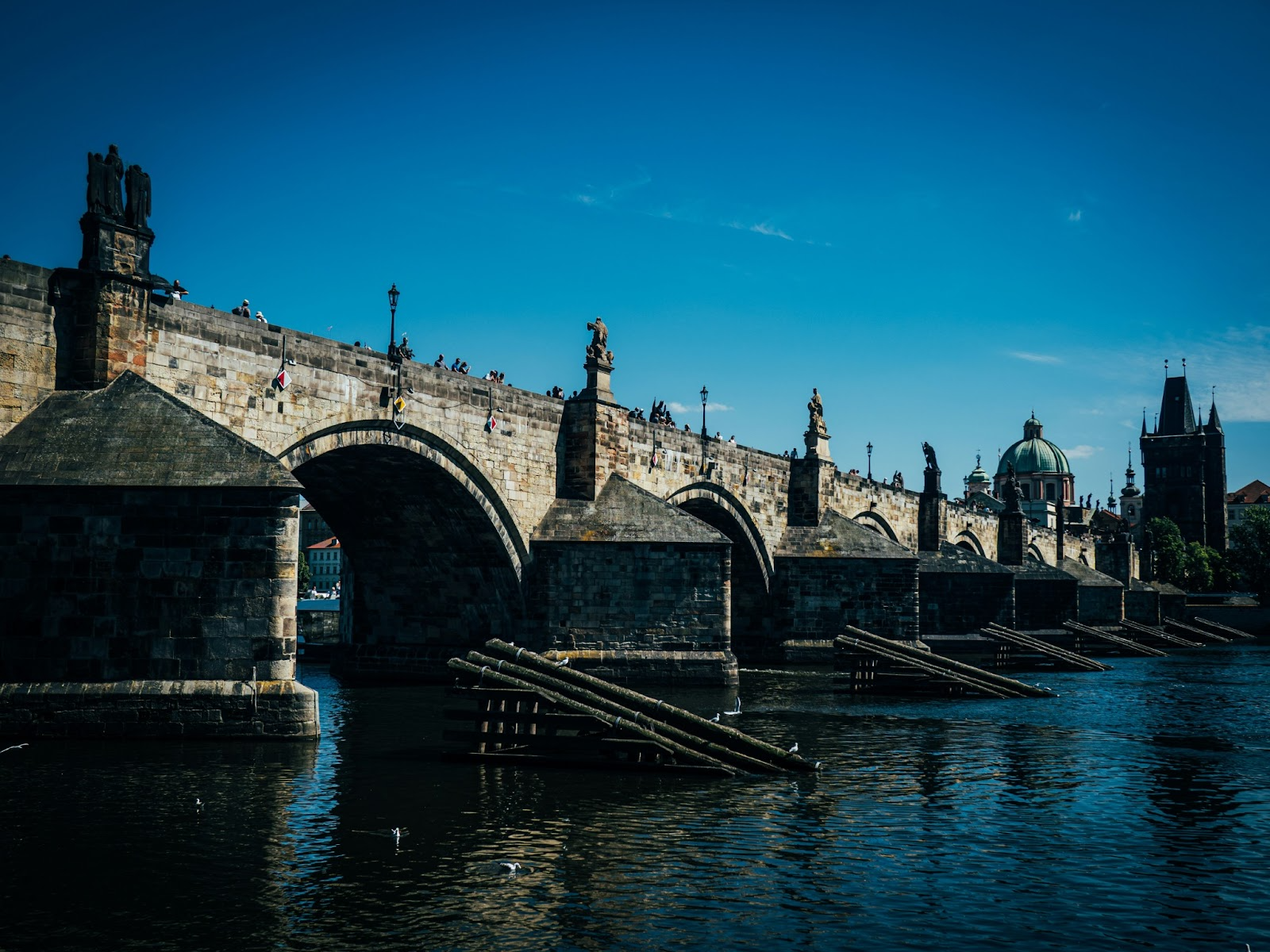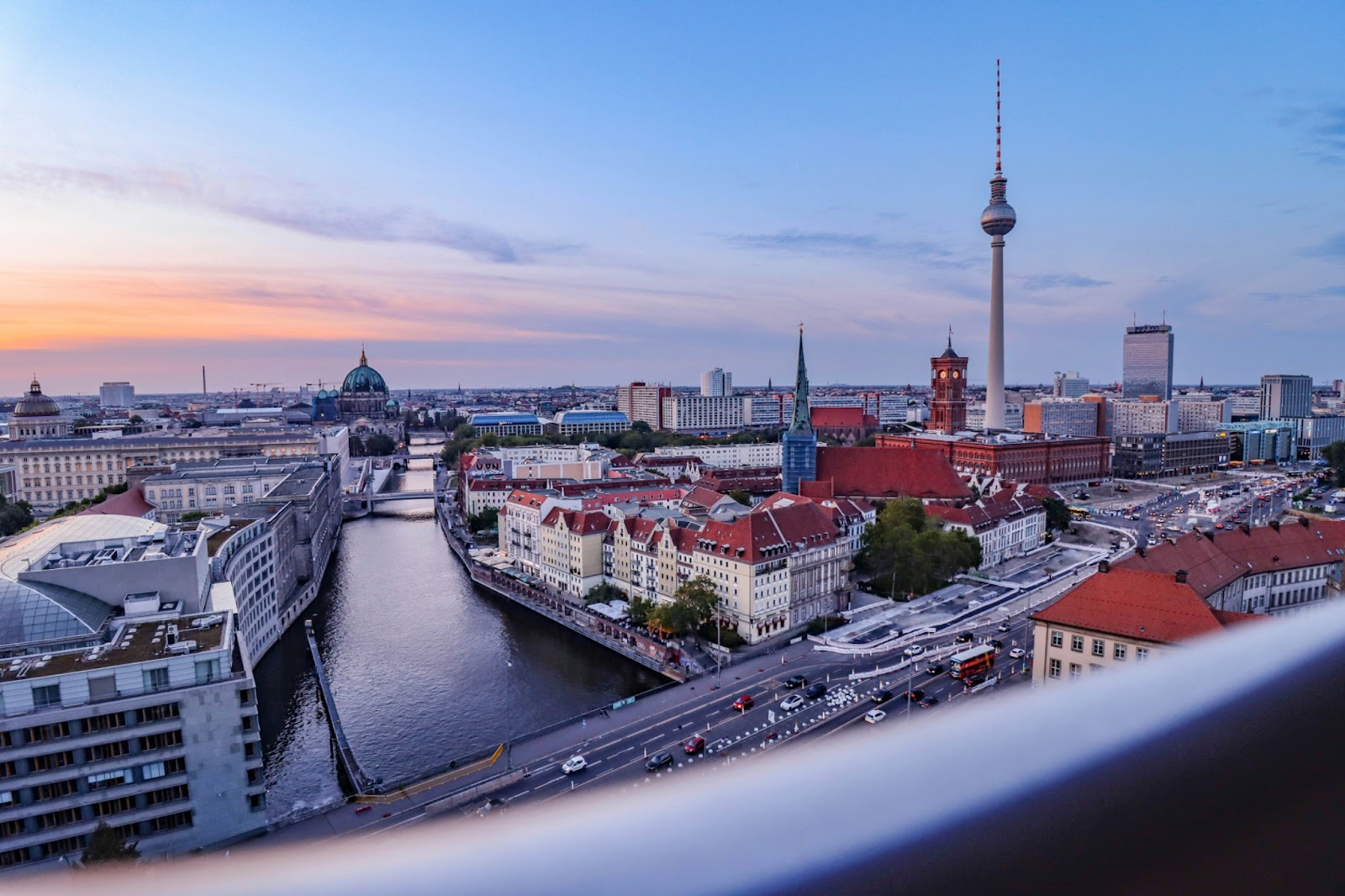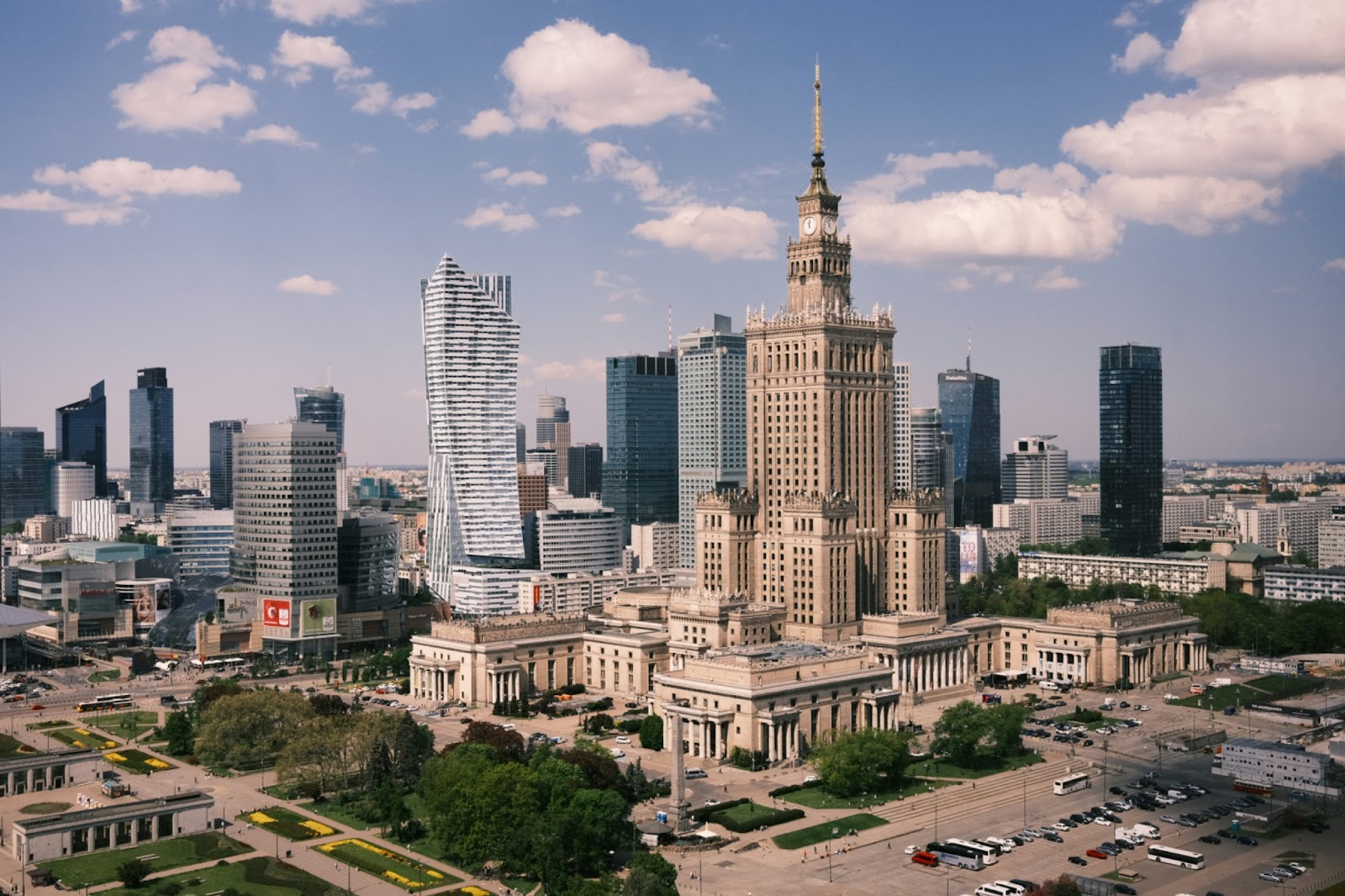Central Europe is not just a destination — it’s an experience that lingers. It’s the smell of roasted chestnuts drifting through a square, the echo of church bells over cobbled streets, and the sight of sunlight catching on painted façades. From the medieval charm of Prague to the layered history of Berlin and the resilient beauty of Warsaw, every city feels alive, and every journey between them only adds to the story.
Table of Contents
Prague: Fairytale City, Living Heart
Prague feels like a city born from dreams. The Old Town Square is where its soul gathers — a stage alive with buskers, painters, and the hourly performance of the Astronomical Clock. People stop mid-conversation, necks craning upwards, as figures move across its ancient face. The crowd sighs in unison when the show ends, as though centuries of wonder still ripple through the air.
Charles Bridge is another chapter in the tale. At dawn, fog clings to the Vltava and statues loom like guardians in the mist. By evening, it comes alive with the strum of guitars, laughter from tourists, and lanterns glowing softly against the stone. Above, Prague Castle glows golden at sunset, its cathedral spires piercing the skyline. Within the walls, quiet gardens and narrow lanes invite you to linger, unhurried, as if time here has a gentler pace.
When it’s time to continue the adventure, the train from Prague to Berlin becomes part of the story. You press your forehead to the glass, watching villages with red rooftops and church steeples slip past. Rivers flash silver in the sun, forests close in, then open again into meadows. It feels less like leaving and more like turning a page.
Berlin: Honest, Bold, and Restless
Berlin greets you with candour. The East Side Gallery transforms what remains of the Berlin Wall into a kilometre-long mural, where concrete slabs burst with colour, hope, and defiance along the riverside. Each brushstroke feels like a message to the future.
The Brandenburg Gate, once a backdrop to division, now draws crowds of tourists snapping photos while children dart after pigeons. Even with all this movement, the monument still radiates a quiet weight, a reminder of the history it has witnessed. The Reichstag, crowned with a gleaming glass dome, invites visitors to climb and look out across the city, a literal and symbolic chance to see Berlin’s resilience from above.
But the city’s soul is not only in its landmarks — it lives in its neighbourhoods. In Kreuzberg, the aroma of sizzling kebabs mingles with the sharp scent of spray paint from fresh graffiti, while conversations in dozens of languages spill out from bars and cafés. Berlin is not content to be observed at a distance; it insists on being experienced.
From here, the Berlin to Warsaw train carries you eastward. The gentle rhythm of the journey, passing through fields and forests, feels like a bridge between eras — landscapes once marked by borders now quietly connecting nations.
Warsaw: A City Reborn
Warsaw is a place where resilience is written into its very stones. Its Old Town Market Square, levelled during the Second World War, was painstakingly rebuilt and now stands as a proud symbol of defiance. Pastel façades line the cobbles, cafés spill onto the square, and artists paint beneath the shadow of the Royal Castle — proof that beauty can rise again from devastation.
The city’s cultural heart is equally powerful. The POLIN Museum shares stories of Jewish history with compassion and depth, inviting visitors to reflect while celebrating survival. In summer, the gentle notes of Chopin’s music float across Łazienki Park, mingling with the rustle of peacocks and the glide of swans across mirror-like lakes.
Warsaw feels like a phoenix — a city that has endured fire and ruin, yet has re-emerged with determination and vitality. Its skyline mixes glass towers with baroque spires, and its spirit blends history with hope.
The Journeys Between
Train travel here feels almost meditative. More than a way to move, it is a space to pause. You sip coffee, lean against the window, and watch as fields stretch endlessly, forests ripple in the breeze, and villages flicker by in snapshots of daily life.
Each connection links more than just destinations. The rails stitch together Prague’s fairytale spires, Berlin’s street art and scars, and Warsaw’s rebuilt beauty. The rhythm of the train becomes part of the memory, carrying you across landscapes that feel less like divisions and more like threads in a single shared story.
Conclusion: Treasures That Stay With You
Prague, Berlin, and Warsaw offer treasures that go beyond architecture or monuments. Prague enchants with its storybook charm, Berlin challenges with its candour and creativity, and Warsaw inspires with its resilience and warmth. Together, they form a journey through contrasts — old and new, fragile and strong, scarred yet proud.
What remains with you are not only the sights but the sensations: the chiming of Prague’s Astronomical Clock, the colours of Berlin’s murals against grey skies, the taste of hot pierogi in Warsaw as dusk settles over Market Square. These are not just things you see; they are things you feel.
To travel here is to do more than move between cities. It is to touch the stones, hear the music, taste the food, and stand in places where history was made — and where it still lives. Central Europe doesn’t simply show you its treasures; it lets you carry them home, woven into your own story.



